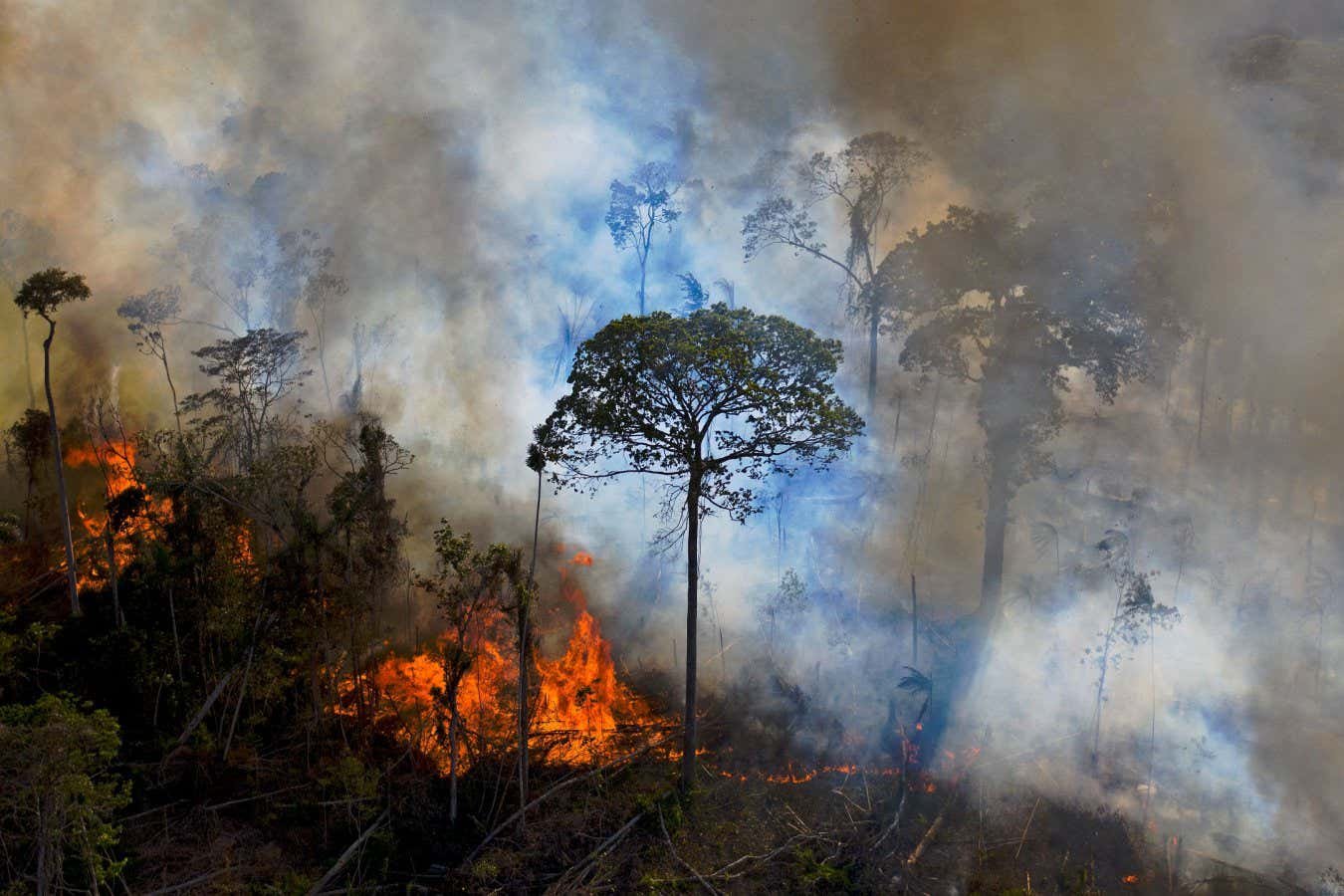
Wildfires in the tropics drove some increase in CO2 emissions but the bulk was driven by burning fossil fuels
Carl De Souza/AFP/Getty Images
Carbon dioxide emissions from burning fossil fuels in 2024 are set to blow past last year’s record levels, dashing hopes this year will see the planet-warming emissions peak.
“Reducing emissions is more urgent than ever and there’s only one way to do it: massively reduce fossil emissions,” says Pierre Friedlingstein at the University of Exeter, UK.
That is according to the latest Global Carbon Budget report, a preliminary accounting of CO2 emissions to date with projections to the end of the year, produced by Friedlingstein and his colleagues. It was released at the COP29 summit now underway in Azerbaijan, where countries aim to set new financial targets to address climate change.
Last year, some researchers were forecasting a peak in emissions in 2024, but the report finds human-caused CO2 emissions are set to reach a record 41.6 gigatonnes in 2024, a 2 per cent rise on 2023’s record. Almost 90 per cent of that total consists of emissions from burning fossil fuels. The rest is from changes in the land driven mostly by deforestation and wildfires.
At 0.8 per cent, the growth rate of fossil fuel emissions is half that of 2023, although it remains higher than the average rate over the past decade. “[The slower rate] is a good sign, but it’s still miles away from where we need to get,” says Friedlingstein.
Despite a long-term downward trend, projected emissions from land use change also increased this year, largely due to drought-driven wildfires in the tropics. Some of the increase is also down to a collapse of the carbon land sink in 2023, which usually removes about a quarter of our annual CO2 emissions from the atmosphere. This sink declined by more than 40 per cent last year and the early part of 2024 as global temperatures spiked under the influence of El Niño.
“2023 is an incredible demonstration of what can happen in a warmer world when we had peak records in global temperatures combined with El Niño droughts and fires,” says Pep Canadell at the Commonwealth Scientific and Industrial Research Organisation in Australia, a co-author of the report. “Put all these things together and last year we had almost a third less help removing atmospheric CO2 by the world’s forests than we have had over the last decade.”
While this also added to emissions in 2024, the researchers expect this “land carbon sink” has mostly recovered as the warming influence of El Niño has faded. “It’s not a long-term collapse,” says Friedlingstein.
The report finds CO2 emissions in China, which generates nearly a third of the global total, are only projected to increase by 0.2 per cent in 2024 compared to 2023. Canadell says that because of the large margin of error in this projection of China’s emissions, it is actually possible they have stayed steady or gone down. India’s emissions also increased at a slower rate than last year, rising by just under 5 per cent. In the US and the EU, emissions continued to decline, albeit at a much slower rate than last year.
Hot temperatures that boost electricity demand to power air conditioning are also a key reason why fossil fuel emissions have continued to rise despite the massive build-out of renewables in 2024, says Neil Grant at Climate Analytics, a think tank in Germany. Whether due to electric vehicles, data centres or manufacturing, “most people have been caught a bit surprised by the level of electricity demand this year”, he says.
If emissions continue at this level, the report finds that within six years the world will exceed its remaining carbon budget to limit warming to 1.5°C above pre-industrial levels, and will exceed the budget to stay within 2°C warming within 27 years.
“We have to accelerate, accelerate, accelerate, accelerate the transition to renewable energy,” says Canadell. “Climate change is like a slippery slope that we can just keep falling down. We need to slam on the brakes as hard as we can so we can stop falling.”
Topics:


Recent Comments